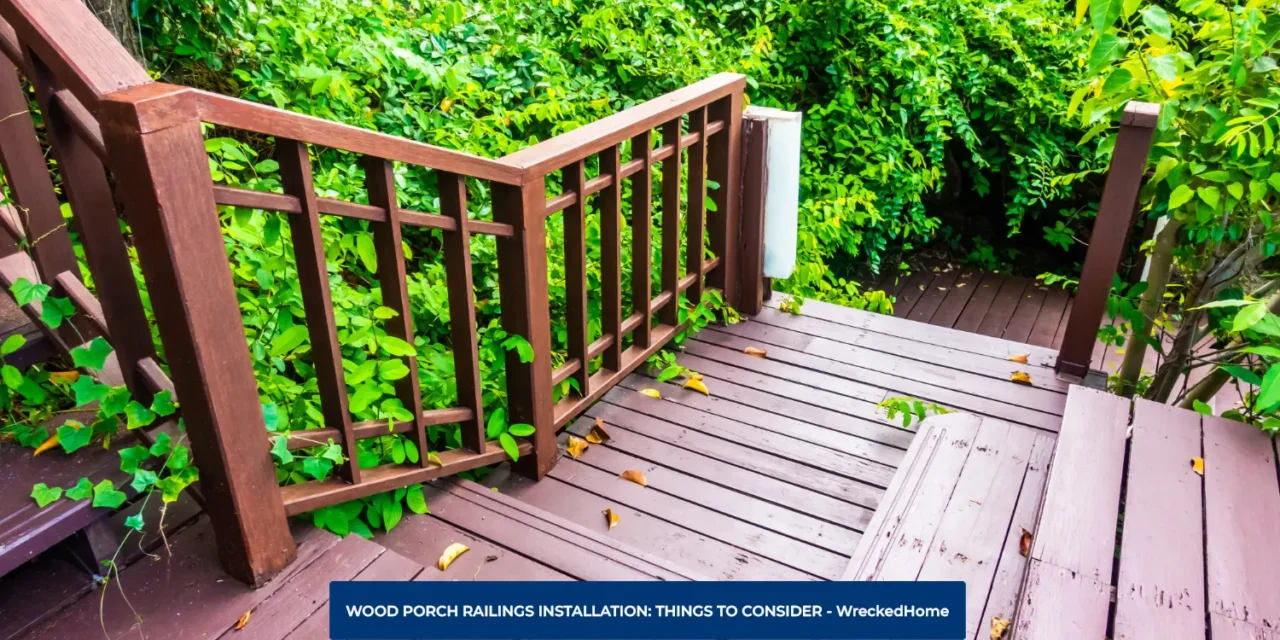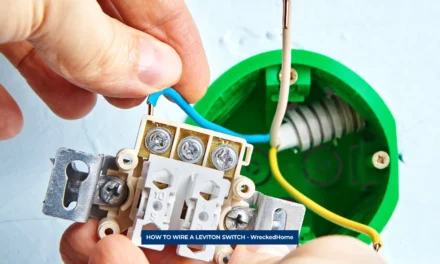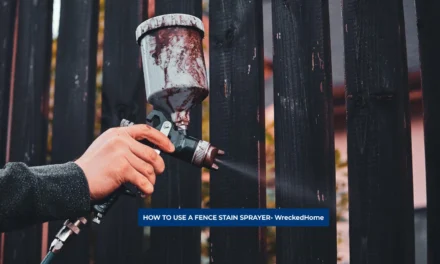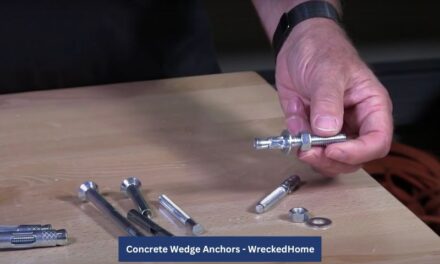Choosing wood porch railings is an important decision, as it should match your home’s overall aesthetic. While choosing one for your home it’s essential to choose a good quality wood porch railing that will last for years to come. A well planned and designed railing will be a timeless addition to your home. Not only does it enhance safety but also improves the overall look of the house.
If you survey the market, you will find out that there are unlimited porch railing kit options available. Some are very limited in customization while others have unlimited customization. This article will explore the different factors to consider when purchasing wood porch railings. All in all, it will help you make a well thought out decision while choosing the best option for your house.
- Material Selection Of Wood Porch Railings
- Design and Style Options Of Wood Porch Railings
- DIY vs. Professional Installation Of Wood Porch Railings
- Prefabricated vs. Custom Wood Porch Railing Kits
- Maintenance Requirements Of Wood Porch Railings Kits
- Budget Considerations While Choosing A Suitable Porch Railing
- Conclusion
- Frequently Asked Questions FAQs
Material Selection Of Wood Porch Railings
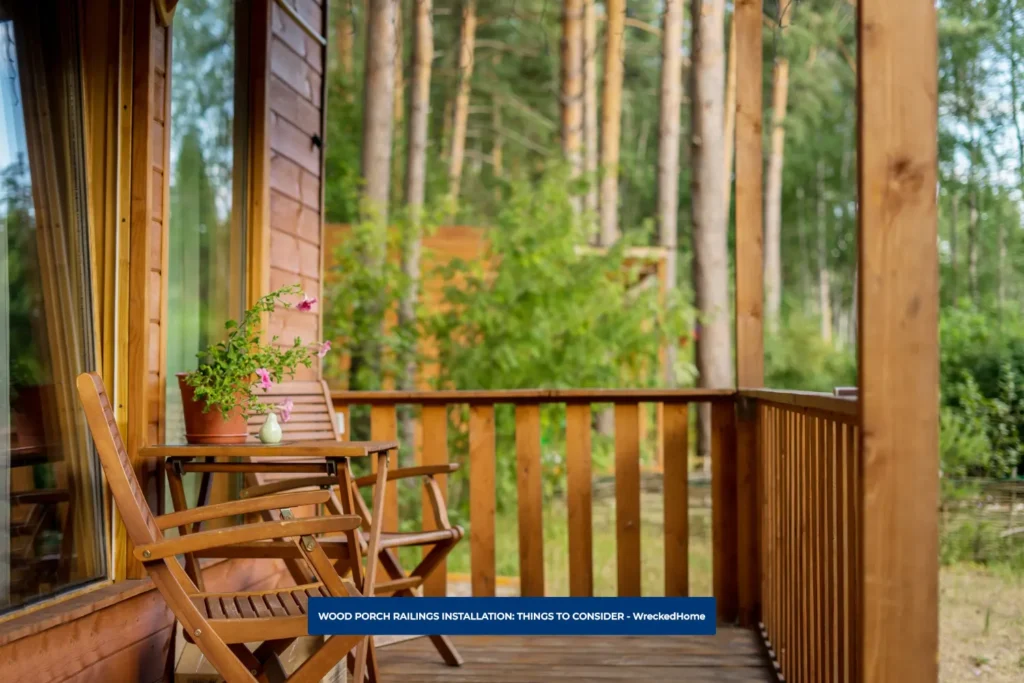
There are no other materials that can give a more classic look than wood gives for wood porch railings. Different types of wood are used in making these railings such as, cedar, mahogany, redwood and pressure treated pine. The characteristics of each material is mentioned below:
- Cedar: It is a popular choice for wood porch railings due to its longevity and resistance to being infected by insects. It’s an economical choice and is easy to handle during installation as it’s not heavy. It’s great for areas with humid weather as it doesn’t affect it. Here’s an article about cedar fence posts on our website, that you must read!
- Mahogany: Mahogany is a beautiful and durable wooden material that has a deep and dense color which can be left as it is. It is the most expensive among all the other wood options, but it is still highly preferred.
- Redwood: Redwood is also a commonly used material for wooden railings as It is quite durable. If maintained properly it can last for years to come because it does not decay or attract insects. However, it’s more expensive than cedar.
- Pressure-Treated Pine: Pressure-treated pine is the best option for those looking for a less expensive wooden option. It undergoes treatment so it does not decay or get infected by insects.
The choice you make should depend on factors like the local weather where you live, your personal choice and your willingness to provide it the maintenance it needs. Below are some pros and cons of choosing wooden porch railings:
Pros:
- Many style options are available
- It has a variety of traditional and timeless looks available
- It has a beautiful natural aesthetic
- Can be easily repaired and painted
Cons:
- High cost of maintenance
- Can rot due to harsh weather conditions
Design and Style Options Of Wood Porch Railings
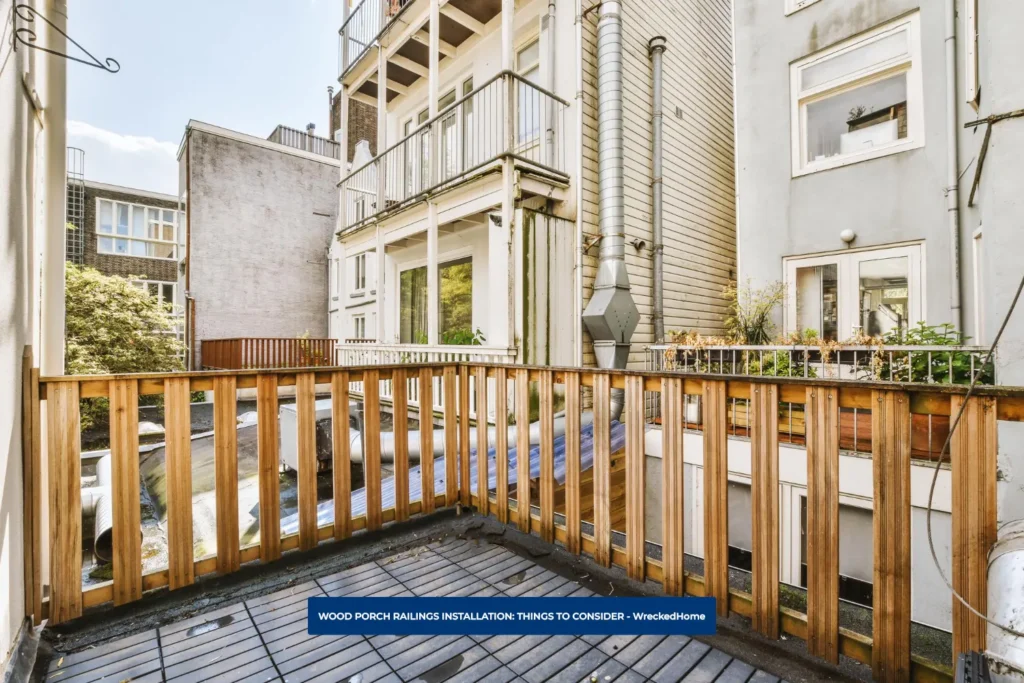
We have mentioned the different parts of wood porch railings below. The design that you choose will depend on you personal preference. The different choices you have are below.
- Balusters: These are horizontal and vertical posts that make the structure of a railing. It’s up to you to make a choice that goes well with your home as they are available in many different designs and sizes.
- Handrails: They give a proper finishing touch to your railings and can be both decorative and simple. They are available in curved and straight designs.
- Top rails: They horizontally run over the balusters. This is where you rest your hand while standing next to the rail. Simple or intricate design elements can be added to this part to give it your desired look. If the design has curves then it will have an elegant soft look, however straight handrails will offer a more modern look.
- Spindles: These are decorative pieces that you place between the top and bottom of the porch stair rail. They come in different design that provide a decorative element.
So, take your time to choose a design that is similar to the look of your house. Traditional designs have more intricate and ornamental handrails and balusters whereas modern designs are more sleek and minimalist.
DIY vs. Professional Installation Of Wood Porch Railings
While purchasing wood porch railings kits, it’s important to decide beforehand about how they will be installed. If you have experience about installing wooden fixtures then you can opt for a DIY kit with detailed instructions. If not, then these kits can be properly installed by hiring a professional contractor. You can Find A Pro Near You Here!
A DIY kit would have less cost then other kits as they are pre-made according to different sizes. If you are doing things yourself, make sure you have the right tools like drills and saws. It is important to have railings properly installed in your home because they ensure both the safety of your home and add an aesthetic appeal. Hence it’s best to hire professional help if you are unsure about it.
Prefabricated vs. Custom Wood Porch Railing Kits
Wood porch railings kits have two categories, prefabricated and custom. Both of these come with their own benefits and drawbacks. They are mentioned below:
- Prefabricated Kits: These kits cannot be customized. However, they do come in certain chosen designs. All you have to do is install. They come in set designs and sizes. With that being said, they might not be a fit if you need custom measurements that are not standard.
- Custom Kits: By the name, you can get the idea that these kits can be customized according to the specific dimensions of your porch. Customization of these kits can be made in any design you prefer. You can choose the one that flows with the overall look of your home. But, while choosing these kits it’s important to consider that they are usually more expensive than prefabricated ones.
The type you choose depends entirely on your porch’s design and your preference for your home’s exterior.
Visit our store for 10% off ourHome Maintenance products here.
Maintenance Requirements Of Wood Porch Railings Kits
Wood porch railings do require timely maintenance, however, it depends on the type of wood used and its finishing. Below we have mentioned the requirements of how each type of wood should be individually maintained:
- Cedar: Cedar itself resists decay, however, by providing regular maintenance you can give it a refreshed look and seal it from any damage caused by the outdoor conditions.
- Redwood: Redwood has a similar nature as cedar because it’s also decay and insect resistant. However regular maintenance can ensure a protective finishing layer.
- Mahogany: Mahogany is the most expensive among all other types of wood used for railings. It requires cleaning and staining every two years, this improves its longevity and appearance.
- Pressure-Treated Pine: Pressure-treated pine is the cheapest among all the above mentioned wood types. That’s because it wears out fast so it requires regular inspection for signs of wear and tear. You can maintain its appearance by staining it and sealing it regularly every few years.
Ultimately, how frequently you maintain your wooden railings depends on the weather conditions where you live, exposure to other tough elements and how well it was finished the first time it was installed.
Budget Considerations While Choosing A Suitable Porch Railing
It is important to set out a budget while choosing wood porch railings and making a final decision accordingly. This is because porch railing kits are available in different price ranges. We have mentioned some of the important factors that should be considered while making a choice:
- Material Cost: You should choose the type of wood that fits your budget range. Mahogany, cedar and redwood are more expensive in comparison to pressure-treated pine.
- Installation Cost: It’s important to add the installation cost to your budget because hiring a professional means a fee will be charged. So make sure you contact different contractors and hire the one who would do a great job at a reasonable price.
- Maintenance Cost: Maintenance is usually done every few years depending on the conditions in your outdoor area. Its cost depends on the type of wood and its finishing.
One important thing to remember is that if you purchase an expensive and good quality wood porch railings kit then this means your long term maintenance costs will decrease.
Local Building Codes
While deciding which wooden porch railing kit to purchase, it’s important to go through your local area’s rules and regulations regarding them. This includes the height limit, handrail requirements, design restrictions and the spacing allowed between the balusters.
Conclusion
Choosing the correct wood porch railing is an important decision as it can either make or break the overall look of your house. Hence, choose wisely by considering all the important factors from the budget to material, design, installation process, maintenance and local rules and regulations. This way you can make the most appropriate choice and improve the look of your outdoor space.
To read more helpful articles related to home maintenance, log on to our website.
For any repairs, installations, builds, or questions; We recommend you to hire a professional. Find A Pro Near You Here!
Frequently Asked Questions FAQs
Why should I choose a pre-made wooden porch railing kit instead of a custom-made railing?
Choosing a pre-made wooden porch railing kit guarantees easy installation of the railing. Different components that are needed to set up the railing are provided, these kits are available in different sizes so you can choose according to your porch. Whereas, custom-made railings will be according to your preference. But they are time consuming and expensive to get made.
Which type of wood is commonly available for porch railings?
The types of wood that are most commonly used for porch railings are mahogany, cedar, redwood and pressure-treated pine due to their characteristics. These types of wood are durable, have few maintenance requirements and therefore are the most suitable option for being used as porch railings.

